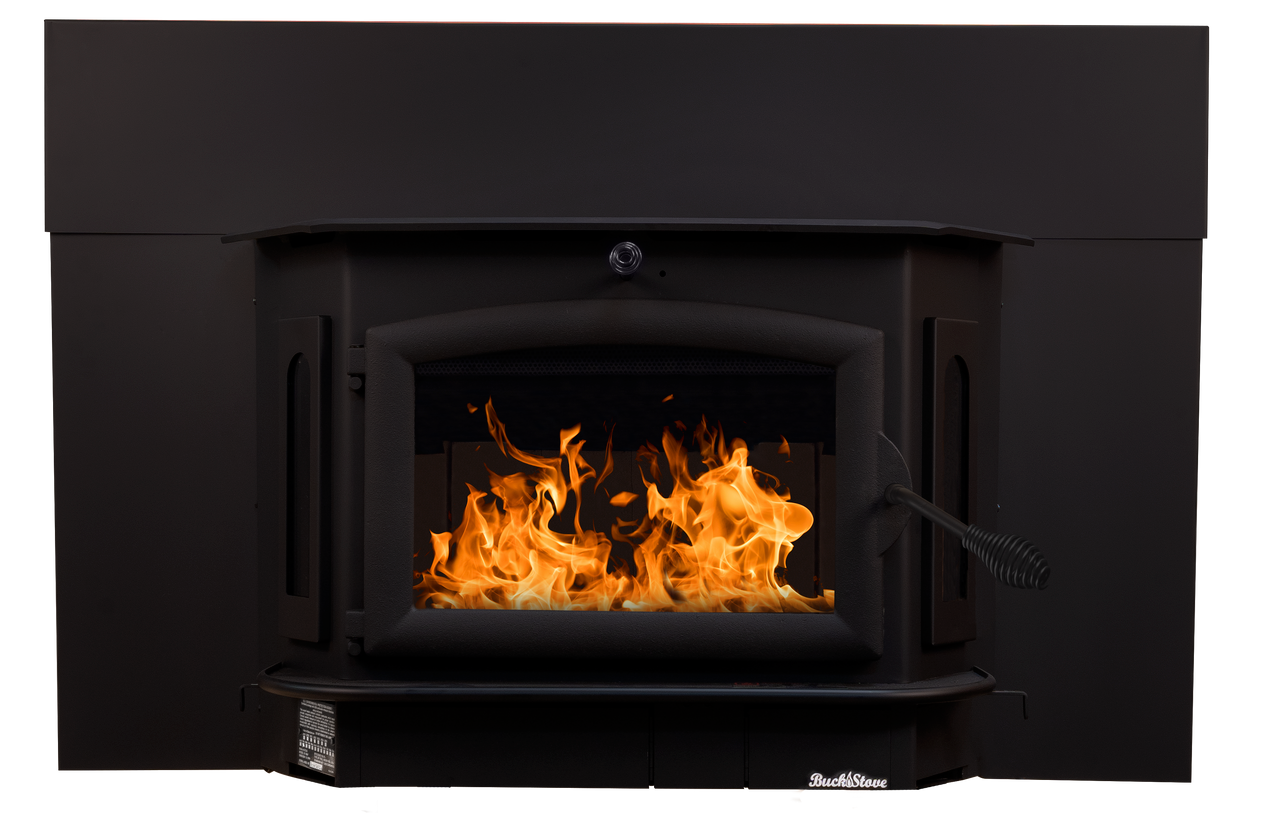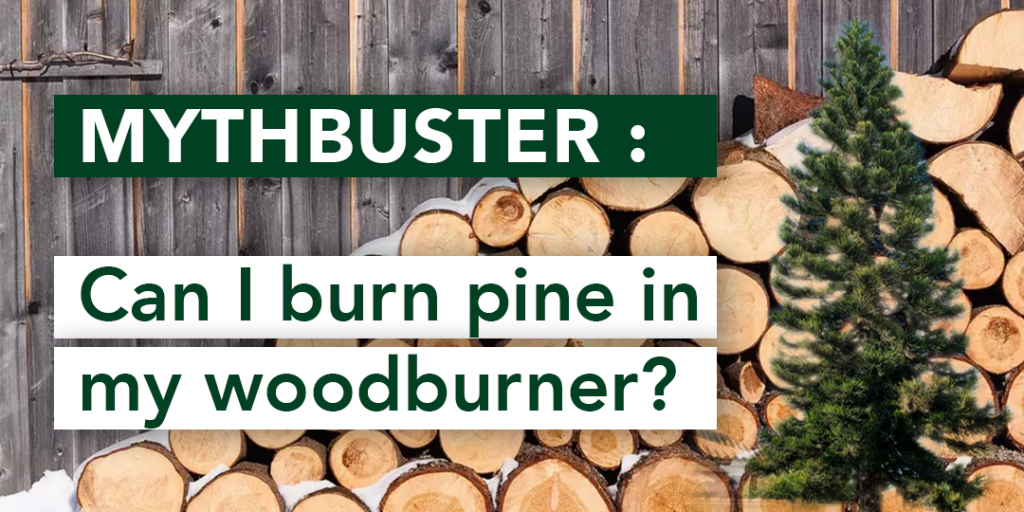Yes, you can burn pine in a wood stove. Pine is great for starting fires and burns for a good amount of time.
It’s easy to light due to the sap acting as an ignitor. However, it won’t have the longest burn. Proper safety measures and regular maintenance are important when using pine in a wood stove to prevent potential hazards. Pine firewood is known for its benefits in starting fires, particularly when split into kindling.
Despite this, it is important to be cautious when using pine as firewood, as it can produce harmful creosote, leading to potential house fires. While it is possible to burn pine in a wood stove, it is essential to follow safety guidelines to minimize risks.

Credit: www.fireplacedoorsonline.com
The Truth About Burning Pine In A Wood Stove
Pine firewood is suitable for kindling due to its ease of ignition from sap, making it ideal for starting fires. While it may not burn the longest, it does provide a decent burn time. Burning pine in a wood stove can be a viable option with its benefits for fire starting.
Is Pine Suitable For Burning?
Burning pine in a wood stove is a topic of much debate in the firewood community. While some argue against using pine due to safety concerns, others find it to be a suitable option for specific purposes.
Benefits Of Burning Pine
- Pine is great for starting fires, especially when used as kindling.
- The sap in pine acts as an ignitor, making it easy to light.
- While pine may not burn as long as other woods, it provides a decent burn time.
Safety Concerns And Proper Usage
It is crucial to use pine responsibly in a wood stove to avoid potential hazards. Pine wood produces more creosote than hardwoods, which can lead to chimney fires if not properly maintained.
Ensure that the pine wood is seasoned thoroughly before burning to reduce the creosote buildup. Additionally, clean the chimney regularly to prevent any fire risks.
Myths And Facts
Burning pine in a wood stove has been a subject of much debate, with differing opinions leading to confusion. Let’s unravel the myths and present the facts about burning pine in a wood stove to help you make an informed decision.
Debunking Myths About Pine Burning
Many myths surround the burning of pine in a wood stove. It’s commonly believed that burning pine creates excessive creosote, posing a fire hazard. However, this myth needs to be dispelled. While it’s true that pine can produce creosote, proper burning techniques and maintenance can effectively mitigate this issue, making it safe to use in a wood stove.
Facts About Seasoning Pine Firewood
Seasoning pine firewood is crucial to ensure efficient burning and minimal creosote buildup. Unlike hardwoods that may take longer to season, pine firewood generally requires a shorter seasoning period. With proper storage and drying techniques, pine firewood can be ready for use in as little as six months, making it a practical option for those needing quick access to firewood.
Choosing The Right Firewood
When it comes to using a wood stove, choosing the right firewood is crucial for both efficiency and safety. While there are various types of wood that can be used as fuel, not all woods are suitable for burning in a wood stove. In this section, we will explore the types of wood that are not suitable for wood stoves and how to properly season pine firewood.
Types Of Wood Not Suitable For Wood Stoves
While it may be tempting to burn any type of wood you have on hand, there are certain types that should never be burned in a wood stove. These include:
- Plywood or MDF: Plywood and Medium Density Fiberboard (MDF) contain adhesives and resins that can be harmful when burned, releasing potentially toxic fumes into your home.
- Treated or painted wood: Wood that has been treated or painted often contains chemicals that can produce dangerous vapors when burned.
By avoiding these types of wood, you can ensure that you are promoting a safe and healthy environment when using your wood stove.
How To Properly Season Pine Firewood
Although pine is often considered a suitable firewood option, it is essential to properly season it before burning. Seasoning wood involves removing moisture from the logs, which allows for more efficient and cleaner burning. Here are a few tips for properly seasoning pine firewood:
- Cut and split the wood: Begin by cutting and splitting the pine logs into smaller pieces. This not only helps speed up the drying process but also ensures that the wood burns more evenly.
- Stack the wood: Create a well-ventilated stack of the pine firewood in a dry area. Ensure that the wood is stacked off the ground to prevent moisture absorption from the soil.
- Allow for sufficient drying time: The drying process for pine firewood can take anywhere from six months to a year. It is crucial to allow the wood to dry completely to achieve optimal burning results.
- Check for moisture content: Before using the wood, check the moisture content using a moisture meter. Ideally, the moisture content should be below 20% for efficient burning.
By following these steps, you can ensure that your pine firewood is properly seasoned, leading to a more enjoyable and efficient wood stove experience.

Credit: www.amazon.com
Ensuring Safety
Burning pine in a wood stove can be safe, as it ignites easily due to its sap content, making it ideal for kindling. While it may not burn as long as hardwoods, it provides a reliable source of heat. However, avoid burning treated or painted woods, as they emit harmful vapours.
Ensuring Safety Proper Ventilation When it comes to burning pine in a wood stove, it is crucial to prioritize safety. One of the key aspects to consider is proper ventilation. Adequate ventilation ensures that harmful gases, such as carbon monoxide, can escape, reducing the risk of carbon monoxide poisoning. A well-ventilated stove also helps maintain the efficiency of the burn, ensuring a cleaner and safer burn. Maintenance In addition to proper ventilation, regular maintenance of your wood stove is essential for safety. This includes cleaning out any creosote buildup, which is a byproduct of burning pine and other resinous woods. Creosote is highly flammable and can lead to chimney fires if not removed regularly. Proper maintenance also includes checking for any cracks or leaks in the stove, as well as ensuring that all components are functioning correctly. Safety Precautions while Burning Pine When burning pine in a wood stove, it is important to take extra precautions to maintain the safety of your home and loved ones. Here are some safety measures you should follow: 1. Use seasoned pine: Burning seasoned pine reduces the amount of creosote produced compared to burning wet or unseasoned wood. Seasoning wood involves drying it out for a period of time, usually around 6-12 months, to reduce its moisture content. This helps create a cleaner burn and minimizes the risk of creosote buildup. 2. Never overload the stove: Avoid overcrowding the stove with too much pine or any other wood. Overloading the stove can lead to an uncontrolled burn, increased creosote buildup, and potential chimney fires. Follow the manufacturer’s recommendations for the maximum amount of wood to use at a time. 3. Monitor the stove while burning: Always keep an eye on the wood stove while it is in use. Regularly check for any signs of excessive smoke or unusual odors. This will help you identify any potential issues and take action before they escalate into larger safety concerns. 4. Install carbon monoxide detectors: Since burning pine can produce carbon monoxide, it is crucial to have carbon monoxide detectors installed in your home. These detectors will alert you if there is a dangerous level of carbon monoxide present, allowing you to take immediate action and prevent any harm. In conclusion, while burning pine in a wood stove can be done safely, it is important to ensure proper ventilation and maintenance. Follow these safety precautions to minimize the risk of creosote buildup, chimney fires, and carbon monoxide poisoning. By taking these measures, you can enjoy the warmth and ambiance of a wood stove while keeping your home and loved ones safe.Community Experiences
The experiences and insights shared by wood stove users within the community provide valuable knowledge and guidance on burning pine in a wood stove. Let’s delve into the first-hand opinions and stories as we navigate the benefits, precautions, and real-life encounters with burning pine in wood stoves.
Opinions And Tips From Wood Stove Users
- Burning pine in a wood stove can be beneficial for starting fires due to its easy igniting properties derived from sap, making it ideal for kindling.
- Pine firewood, when properly seasoned, can offer a good burning duration, even though it might not match the longevity of other hardwoods.
- Contrary to prior beliefs, some users have found success and efficiency in burning pine for their wood stoves.
- However, it is crucial to use caution and ensure proper wood seasoning to prevent the accumulation of harmful creosote, which pine is known to produce.
Success Stories And Cautionary Tales
Wood stove users have shared contrasting experiences regarding burning pine, with both success stories and cautionary tales:
- Success Stories:
- Some users have effectively utilized pine as firewood for its quick and easy ignition properties.
- When properly dried and seasoned, pine can provide a satisfying burn duration, making it a viable option for wood stove users.
- Cautionary Tales:
- Improperly seasoned pine can lead to the production of harmful creosote, potentially resulting in chimney fires and safety hazards.
- Using pine without proper care and maintenance can lead to not only inefficient burning but also potential risks to the wood stove and indoor air quality.

Credit: www.jenningschimneysweeping.com
Frequently Asked Questions On Can You Burn Pine In A Wood Stove
Can You Use Pine As Firewood?
Yes, you can use pine as firewood in a wood stove, as it is great for starting fires and burns for a good amount of time. However, it produces harmful creosote, so regular maintenance and ventilation are important for safety.
What Wood Should You Not Use In A Wood Stove?
Avoid using Plywood or MDF because of harmful adhesives and resins. Also, steer clear of treated or painted wood that contains chemicals producing dangerous vapors. It’s safe to burn pine cones for kindling in your fireplace or wood stove. Properly seasoned pine firewood can be used, following safety precautions.
Is It Ok To Burn Pine Cones In Fireplace?
Yes, it is OK to burn pine cones in a fireplace. Pine cones can serve as effective kindling to start a fire.
How Long To Season Pine Firewood?
Seasoning pine firewood takes about 6-12 months, depending on the climate and storage conditions.
Can You Burn Pine In A Wood Stove?
Yes, you can burn pine in a wood stove. Pine is great for starting fires, especially if it is split into kindling. The wood is easy to light because the sap acts as an ignitor and though it won’t have the longest burn, it will burn for a good amount of time.
Conclusion
Burning pine in a wood stove is safe and beneficial when done responsibly. While pine may produce more creosote, proper maintenance and ventilation can mitigate this risk. Pine is ideal for kindling and quick fires, making it a versatile option for wood stoves.
Embracing the use of pine as firewood can bring numerous advantages to your wood-burning experience.